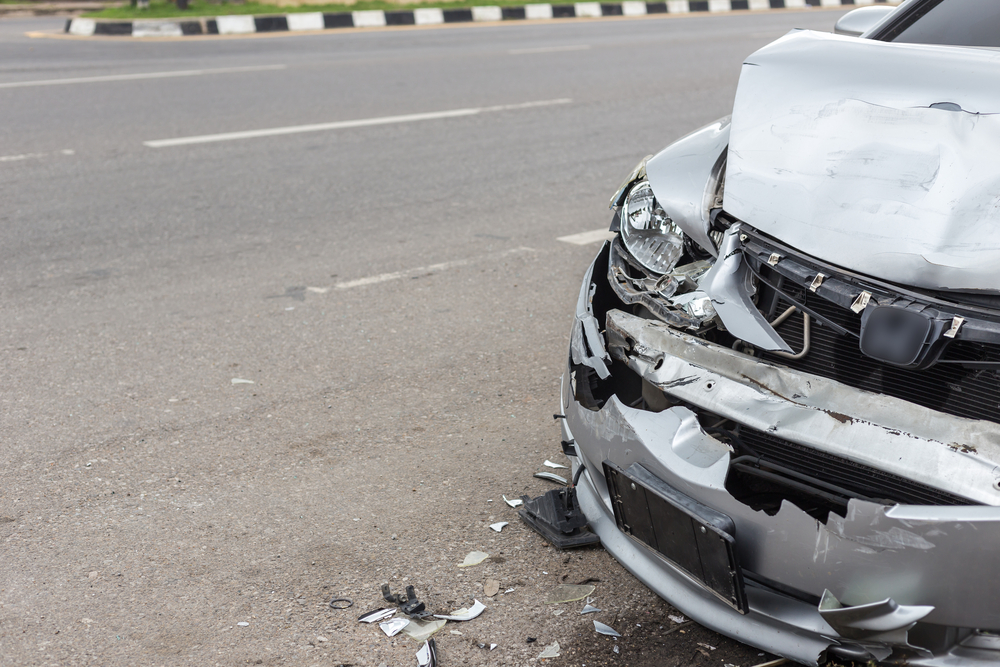Mani Ellis & Layne Accident & Injury Lawyers | February 23, 2024 | Car Accidents

A car accident can be overwhelming in any circumstance and leave you unsure of what to do next. You may be particularly fearful and uncertain about what to expect if you were at fault.
In general, you will be unable to recover compensation from any other party in the crash if you were responsible. However, you may still have a claim if anyone else was even partially at fault.
Here’s what you need to know about your liability for the other driver’s damages and getting the medical care you may need.
What Happens if You Cause a Car Accident in Ohio?
Ohio uses a fault-based insurance system. When someone suffers property damage or injury in a car accident, they can seek compensation from the party responsible for the crash. Some states use a no-fault insurance system in which all parties seek compensation from their own insurance policy regardless of fault.
All motorists are required to carry minimum auto liability insurance in Ohio:
- $25,000 bodily injury liability coverage per person
- $50,000 bodily injury liability coverage per accident
- $25,000 property damage coverage
Liability insurance compensates people other than the policyholder for personal injury and/or property damage when the policyholder is at fault. It does not cover your own property damage or injuries.
Here are the possible consequences you may face if you are at fault for an accident.
You Are Legally Liable for Injuries And Damage You Cause
At a minimum, you will be liable to pay for any damages you caused to others in the crash. Injured parties can make a claim against your insurance policy which pays out up to your policy limits.
If these claims exceed your limits, you will be financially responsible for any excess. Accident victims can file a lawsuit against you to pursue compensation they are owed beyond your policy limits.
If the other parties file a lawsuit and receive a judgment, you have a limited time to pay it or appeal the decision. An appeal requires posting the entire judgment amount as security or using a bond. Otherwise, accident victims are given many options to pursue the money they are owed:
- Garnishment of wages and non-wage assets like bank accounts
- Lien on a business
- Levy or forced sale of certain personal property like tools, boats, and vehicles
- Lien on real estate – a foreclosure can be forced on property that isn’t a primary residence
Within 15 days of notice of the court proceedings to collect judgment, your employer must complete the Payment to Avoid Garnishment form, which is returned to the creditor with a monthly payment.
When a judgment involves a motor vehicle accident, the Ohio Bureau of Motor Vehicles (BMV) can even suspend your driver’s license until you make the payment. This is called a judgment suspension, and it can last up to seven years or even longer if the creditor (person you owe) revives a dormant judgment. Limited driving privileges are not possible with a judgment suspension.
Collection costs and interest of 4% per year can be added to the judgment amount.
You Must Pay Your Own Medical Bills
If you were injured in the accident, your liability insurance won’t cover your medical expenses. You are also unable to pursue the other driver for damages if you were completely at fault.
The only way your auto insurance will cover your medical expenses is if you have Medical Payments (MedPay) coverage. This optional insurance coverage pays medical expenses and funeral expenses for the policyholder and passengers, regardless of fault.
MedPay coverage also allows you to claim damages if you are injured as a passenger in another person’s vehicle, injured in an accident as a pedestrian, or hurt while using public transit. There are no deductibles or copays to use Med Pay benefits.
Med Pay coverage is especially helpful if you do not have health insurance or you have a high deductible plan. Coverage limits range from $1,000 to up to $100,000.
Without Med Pay insurance, you can still use your health insurance to help you pay for your medical bills after the accident. Otherwise, you will need to pay for medical care, prescriptions, and other treatment out of pocket.
You May Be Ticketed and Get Points On Your Driving Record
Depending on the circumstances, you may be ticketed for your role in the accident. Traffic infractions are the least serious traffic law violation, punishable by a fine but no jail time. Failure to yield and speeding are common examples.
Traffic violations can get points added to your driving record. Points are added when the Ohio BMV receives an accident report or traffic violation.
Violations are worth two to six points depending on the severity and type of offense. Most speeding offenses, failure to yield, and texting while driving are two-point offenses. Reckless driving is a four-point offense. Fleeing the scene of an accident and OVI convictions are six-point offenses.
Your license is automatically suspended if you receive 12 or more points within a two-year period. Your license will be suspended for six months. To reinstate your license after six months, you must pay a fee, retake the license exam, file an affidavit stating you have auto insurance, and pass a remedial driving course.
Only moving violations add points to your record. Parking tickets and other non-moving violations do not.
You May Face Criminal Charges
A more serious violation may be a crime punishable with jail time as well as fines. Jail time is possible with reckless driving, driving under the influence (DUI), and hit-and-run, for example.
Only Partially at Fault? You May Still Have a Claim Against The Other Driver
Ohio uses a modified comparative negligence doctrine. This means in cases with shared fault, each party is liable for the share of damages they caused. You can recover compensation from the other party at fault, but only if your share of blame does not exceed 50%. If you are 51% or more at fault for the crash, you will be unable to recover any compensation.
As long as you are not mostly at fault, you may still be able to recover some compensation if another party was partially at fault too.
Under this rule, your recovery is reduced by your share of assigned fault. If your damages are $60,000 but you are 45% at fault, your recovery is reduced to $33,000, or 55%.
While this may not be much in comparison to your total losses, it allows you to hold the other party at fault for their share of blame and reduces your financial burden after the crash.
If you believe another party may share some blame for the accident, it’s important to consult with a personal injury lawyer. This is particularly important if you are being blamed by the insurance company. Even though you may be partially to blame, you are still entitled to compensation if someone else also shares blame.
An experienced Columbus personal injury attorney can help you gather evidence that proves you are not entirely at fault and pursue fair compensation for a portion of your damages. Contact Mani Ellis & Layne Accident & Injury Lawyers today to schedule a free consultation to discuss your case and legal options.
Contact the Car Accident Law Firm of Mani, Ellis & Layne, PLLC for Help Today
For more information, please contact an experienced lawyer at Mani, Ellis & Layne, PLLC to schedule a free initial consultation today. We have convenient locations in Columbus, OH, and Charleston, WV.
Mani Ellis & Layne Accident & Injury Lawyers – Columbus, OH Office
20 E Broad St Suite 1000, Columbus, OH 43215
(614) 587-8423
Mani Ellis & Layne Accident & Injury Lawyers – Charleston, WV Office
10 Hale St Suite 501, Charleston, WV 25301
(304) 720-1000
